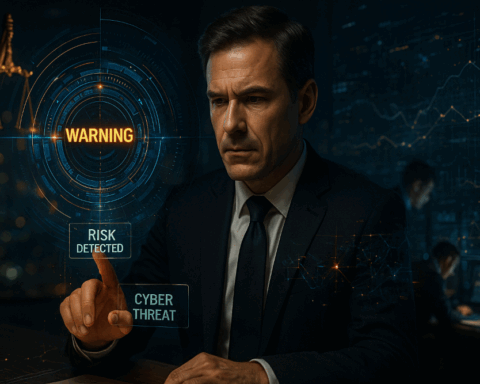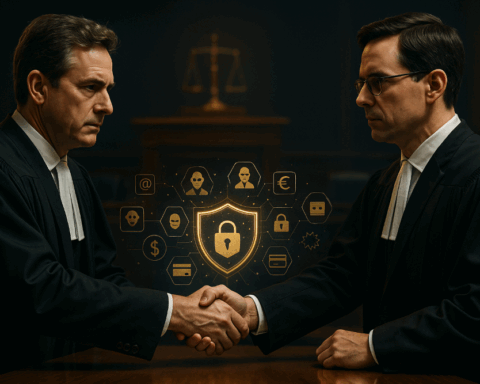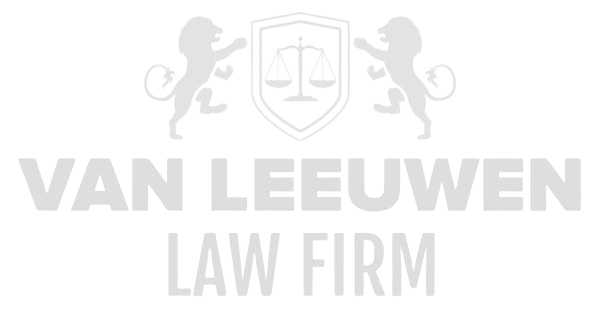Family businesses have traditionally been particularly complex entities where personal relationships and business interests are intertwined to a rare degree. This intertwinement creates a unique vulnerability, especially when serious allegations such as financial mismanagement, fraud, bribery, money laundering, corruption, or violations of international sanctions arise. Such accusations not only disrupt normal business operations but also threaten the foundation on which both the family and the business are built: trust and continuity. In this context, protecting both the family and the enterprise’s value is not merely an administrative exercise but an existential necessity. The complexity of the issues demands a thorough and legally substantiated approach that not only mitigates business risks but also carefully takes into account the family dynamics.
Especially in situations where the family business is confronted with criminal investigations or civil claims involving integrity concerns, it is crucial that the company’s legal structure is set up as robustly as possible. Clear agreements on ownership, management, and decision-making must not only prevent future conflicts but also serve as a defensive line against external threats that could destabilize the business. In practice, this means governance within the family business must be carefully designed, with formal protocols ensuring the interests of all parties involved—family members, management, and external stakeholders—are safeguarded. This integrated approach creates stability in operations and significantly reduces the risk of escalation of family conflicts. This is essential for preserving the reputation and continuity of the family business in times of crisis.
From this legal perspective, Van Leeuwen Law Firm plays an indispensable role. With in-depth knowledge of the legal and financial aspects involved in serious integrity issues, the family business is supported in establishing and maintaining a robust governance structure that can withstand internal and external shocks. The advisory goes beyond merely drafting documents; it encompasses a pragmatic, tailor-made strategy that takes into account the often complex family dynamics and the sensitivities around reputation and trust. All of this aims to prevent the impact of accusations from causing irreparable damage to the company and to ensure the family business can continue sustainably, even under the most challenging circumstances.
Governance Structure and Supervision
Establishing a clear governance structure is indispensable within family businesses facing serious integrity risks. The division of roles and responsibilities among family members, management, and the Supervisory Board must be crystal clear and function undisputedly to prevent conflicts of interest and distrust. This means every body within the company has a clear job description and authority, and decision-making processes are transparent and traceable. Especially in situations involving allegations of fraud or corruption, it is vital that decisions can be verified and that there is no room for doubt about who was responsible for what. Without such mechanisms, the family business quickly becomes a vulnerable target for internal conflicts and external interventions.
In addition to strict role division, it is essential to implement independent control mechanisms. Independent supervisors or commissioners can act as objective guardians of integrity within the company. Their role is to identify potential conflicts of interest, monitor compliance with laws and regulations, and promote a culture of transparency. The absence of such oversight inevitably leads to increased risks of corruption and fraud, which in a family context can easily cloud personal relationships. Therefore, this is not merely a technical matter but a fundamental requirement for the company’s continuity.
Furthermore, the establishment of formal integrity and compliance committees deserves special attention. These committees serve as a platform where family members and non-family members come together to discuss high-risk issues and actively safeguard the company’s integrity. Setting up such committees contributes to creating a culture where discussing problematic situations is encouraged and where the prevention of integrity breaches is central. In light of the high impact of allegations of money laundering, bribery, and sanctions violations, this form of institutionalization is a fundamental tool to strengthen governance within the family business and to build a resilient organization.
Risk Management and Compliance Culture
Designing and implementing a robust risk management and compliance culture is indispensable in family businesses confronted with severe allegations of financial mismanagement and integrity breaches. A culture of integrity and transparency must not merely exist formally but must be genuinely lived, including within the family. This means all involved parties—from the youngest generation to the elders—must be aware of the risks and consequences of fraudulent behavior. Embedding this culture is crucial to maintaining trust both inside and outside the company and to recognizing early warning signs of misconduct.
Training focused on recognizing and preventing fraud and corruption risks plays a key role in this. These trainings should be tailored to the different generations within the family, addressing not only legal obligations but also ethical standards and the possible impact on the family business’s reputation. Breaking the silence and encouraging openness are essential here. Regular and systematic audits form a second crucial pillar. Through continuous monitoring and analysis of high-risk transactions, timely intervention is possible before problems escalate. This allows integrity risks to be kept manageable and prevents incidents from causing significant damage to operations and reputation.
It is vitally important that this risk management and compliance culture is not seen as a standalone exercise but is integrally connected to the strategy and daily operations of the family business. Continuously evaluating and adjusting compliance programs in light of changing laws and regulations, such as sanctions regimes or anti-corruption legislation, is indispensable. Only through this ongoing attention can the family business arm itself against the increasingly complex legal risks arising from the international business environment.
Separation Between Private and Business Assets
A strict separation between the private assets of family members and the assets of the family business is crucial to prevent commingling and the associated risks. This separation is not merely a legal formality but an essential condition to ensure transparency of financial transactions and to avoid potential allegations of fraud or conflicts of interest. In cases where this separation is insufficient, it can lead to serious complications in investigations into financial mismanagement or money laundering, thereby endangering the entire enterprise.
Documenting this separation in formal documents, such as family charters and shareholder agreements, provides clarity not only for the current generation but also for successors. It creates a legal framework within which transactions and asset positions can be clearly traced. This transparency forms a crucial defense line against accusations of corruption or unlawful asset shifts, enabling both the company and family members to protect themselves legally.
Moreover, an adequate separation also prevents personal conflicts within the family from causing financial or operational harm to the business. By setting clear boundaries between private and business assets, disputes can be contained and the risk of reputational damage caused by commingling is limited. This contributes to a more stable business climate where business and family interests are better balanced, allowing the family business to thrive without unnecessary legal risks.
Whistleblower Policy and Internal Reporting Channels
A confidential, secure, and accessible whistleblower policy is indispensable in family businesses confronted with allegations of fraud, corruption, or other integrity breaches. However, within a family context, reporting is extra complex due to the intense personal ties and fear of reprisals, both personally and professionally. Therefore, the whistleblower policy must be specifically designed to address the sensitivities of family businesses and provide protection against retaliation, even if this originates from within the family itself.
Internal reporting channels must be structured so they are accessible not only to employees but also to family members who may detect integrity violations. Confidentiality and anonymity are of utmost importance to foster a culture of openness. The absence of such a policy risks that integrity issues remain hidden, which in the context of external investigations can lead to severe legal and reputational damage.
Protection of whistleblowers must moreover be embedded within a broader compliance framework, which not only provides legal safeguards but also pays attention to the emotional and social consequences within the family. By carefully balancing reporting options and protection, a powerful preventive measure emerges that helps the family business identify integrity risks early and manage them effectively.
Crisis and Incident Management Within Family Dynamics
Developing a crisis and incident management plan that specifically takes into account the unique family dynamics is essential for family businesses confronted with allegations of fraud, corruption, or sanctions violations. In such situations, not only business interests but also emotions, personal relationships, and layers of mutual trust come into play. This requires a crisis approach that is both business-sharp and socially sensitive, to prevent escalation within the family while ensuring business continuity.
Engaging external, independent support and mediation can play a crucial role here. Professional mediators experienced in family businesses can help de-escalate conflicts surrounding accusations at an early stage and reach constructive solutions. This prevents disputes from becoming entrenched in personal grudges that could cause severe damage to the company. An external perspective also brings objectivity and can improve communication between family members and management, enabling trust to be restored.
Additionally, a crisis plan must anticipate the impact of external investigations and potential media attention, without compromising internal harmony. This requires careful coordination and transparency toward all involved parties within the family business, as well as strategic communication externally. A well-thought-out crisis approach provides the family business with a framework to respond adequately and effectively, significantly limiting the risks of reputational damage and operational disruption.
Continuity Planning and Succession
Preparing successors within family businesses is critical to ensuring the survival of the company and the preservation of family values, especially in situations where serious allegations such as financial mismanagement, fraud, corruption, or sanctions violations have disrupted business operations. The generation taking over must not only possess the necessary business skills but also have in-depth knowledge and understanding of the integrity and compliance issues inherent in such contexts. Without a carefully developed succession plan, successors may be ill-prepared for the complex dynamics associated with these risks, leaving the company vulnerable to further internal and external disruptions.
Integrating risk management and compliance into succession plans ensures that future leaders are not only trained in standard business operations but are also confronted with scenarios involving potential legal and reputational risks. This requires intensive education and coaching focused on identifying fraudulent and corrupt practices, understanding the impact of sanctions violations, and developing a proactive approach to compliance. It is an essential component of a robust succession strategy, continuously monitored and adapted to evolving laws and regulations, ensuring that successors can safeguard both operational continuity and stakeholder trust.
The formal transfer of knowledge and responsibilities within the family cannot be underestimated. This process requires structured documentation, clear protocols, and, where possible, independent guidance to prevent the loss or misinterpretation of critical knowledge. Especially in the context of allegations of fraud or corruption, full transparency and accountability must be ensured, with successors explicitly involved in risk management. Van Leeuwen Law Firm provides support in developing succession plans that integrate legal, tax, and governance aspects, ensuring continuity even under the pressure of complex integrity issues.
Legal and Tax Structure Optimization
Legal protection for family members against personal liability forms a fundamental safeguard for both the family and the family business in situations involving financial mismanagement, fraud, bribery, or sanctions violations. In family businesses, close relationships often mean that problems affecting a single family member can rapidly impact the entire company. This necessitates a thorough analysis of existing structures and the design of measures that are not only compliant with laws and regulations but also resilient to internal and external investigations.
Tax structure optimization plays a critical role, not merely for efficiency, but primarily to promote transparency and compliance. Complex holding and trust structures must be configured so that financial flows are fully traceable and leave no room for unauthorized transactions that could lead to suspicions of money laundering or corruption. It is also essential to identify and regulate hidden interests and conflicts within the family. Incomplete or non-transparent structures increase the risk of family businesses becoming targets of criminal investigations and reputational damage.
Van Leeuwen Law Firm advises on and implements customized legal and tax structures tailored to the unique situation of family businesses. Through an integrated approach, liability is minimized, and a culture of compliance and transparency is fostered, essential for withstanding external threats. The combination of legal expertise and tax knowledge enables proactive management of high-risk situations, safeguarding both the integrity and continuity of the family enterprise.
Reputation Management and Communication within Family and Stakeholders
The reputation of a family business is one of its most valuable assets, particularly when allegations of fraud, corruption, or sanctions violations exert pressure on public and internal perceptions. Transparent communication with family members, employees, and external parties is therefore essential to maintain trust and prevent the escalation of reputational damage. Communication management must be carefully tailored to the specific circumstances and sensitivities of both the family and the business, ensuring that internal tensions are not publicly exposed.
Proactive reputation management involves more than reacting to crises; it requires continuously maintaining and enhancing the company’s image. This demands a strategic approach in which all communications are closely monitored, internal stakeholders are informed and engaged, and external messaging is controlled to prevent misinterpretations or unwanted associations with corruption or sanctions violations. Avoiding a negative spiral is crucial, as reputational damage can have financial consequences and erode trust with banks, suppliers, and other key partners.
Moreover, safeguarding family values and public image requires a deep understanding of the cultural and emotional elements that make the family business unique. By communicating consistently and authentically, the family business can defend against negative publicity while strengthening cohesion within the family. Van Leeuwen Law Firm supports the development of communication plans and crisis management strategies, integrating legal risk management with reputation protection to ensure both continuity and credibility.
Oversight and Collaboration with External Advisors
Regular involvement of independent lawyers, accountants, and compliance experts is indispensable when family businesses face serious allegations such as financial mismanagement, fraud, bribery, money laundering, corruption, or sanctions violations. Independent external oversight and audits are crucial for preventing conflicts of interest and obtaining an objective understanding of the integrity risks threatening the enterprise. Such oversight not only provides an additional compliance safeguard but also plays a key role in early detection of potential issues.
Engaging specialized advisors with knowledge of international sanctions and regulatory requirements is essential for family businesses conducting cross-border activities. In a world where sanctions regulations are constantly evolving and non-compliance carries severe consequences, ongoing advisory support is necessary to minimize legal risks and prevent reputational harm. These advisors also play a role in training management and family members, fostering a culture of awareness and adherence to compliance standards.
Van Leeuwen Law Firm facilitates collaboration with these external experts, acting as a coordinating link while applying an integrated approach. By combining legal advice with tax, compliance, and audit services, a cohesive system is created that not only protects the company from risks but also reinforces stakeholder confidence. This coordinated approach is essential for effectively managing the complexities of family businesses facing integrity challenges.
Integration of Technological Solutions
The deployment of technological solutions has become indispensable for effective compliance monitoring and fraud detection within family businesses confronting serious allegations such as financial mismanagement, fraud, corruption, or sanctions violations. Digital tools can be used to monitor transactions and processes in real-time, detect anomalies, and intervene early in potential integrity issues. These technologies provide a level of transparency and control often unattainable through manual processes, significantly reducing risks.
Cybersecurity is an integral part of this technological strategy, as protecting company and family data from cyber threats is vital to prevent confidential information from falling into the wrong hands. A data breach or hack can result not only in financial loss but also in reputational harm that damages both the family and the company for the long term. Therefore, technological solutions must be combined with robust security protocols and an internal culture of awareness.
Transparency also plays a key role in digital reporting to family members and other stakeholders. By using digital platforms, reports can be shared more quickly and accurately, providing a unified overview of compliance and risk status. Van Leeuwen Law Firm advises on and supports the implementation of these technological systems, focusing on tailored solutions aligned with the specific challenges and governance structures of family businesses. This ensures a robust, future-proof approach that protects both the integrity and continuity of the family enterprise.









